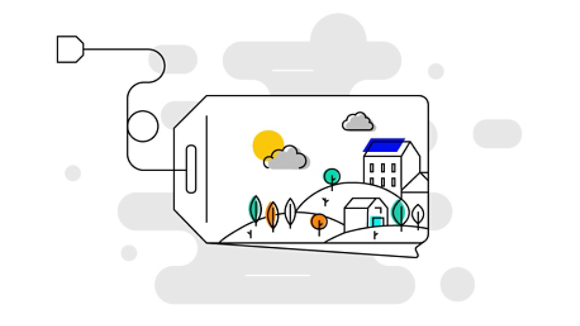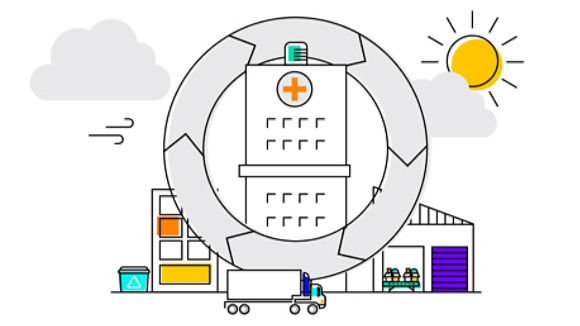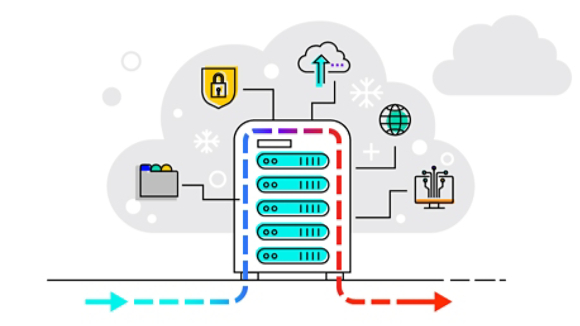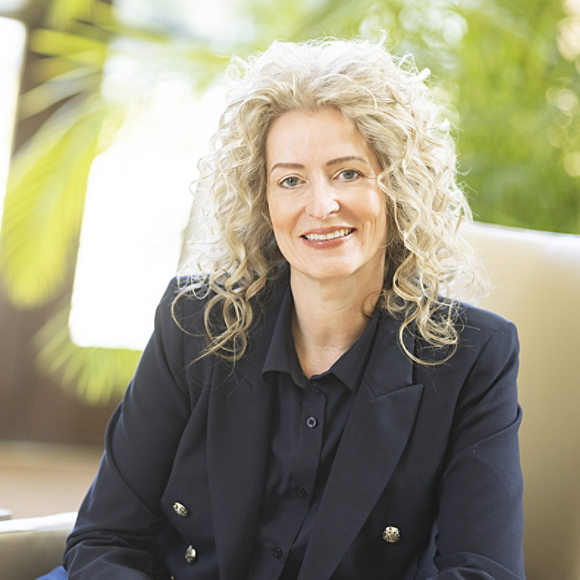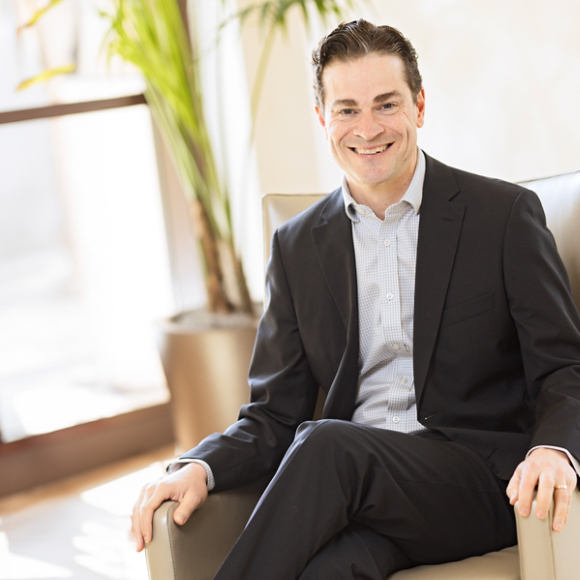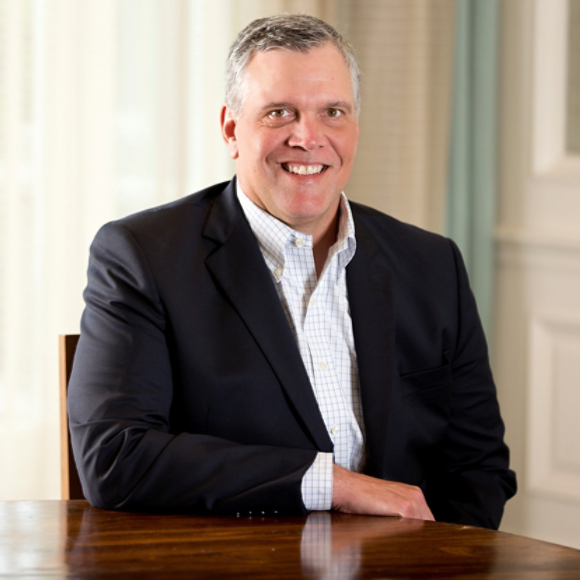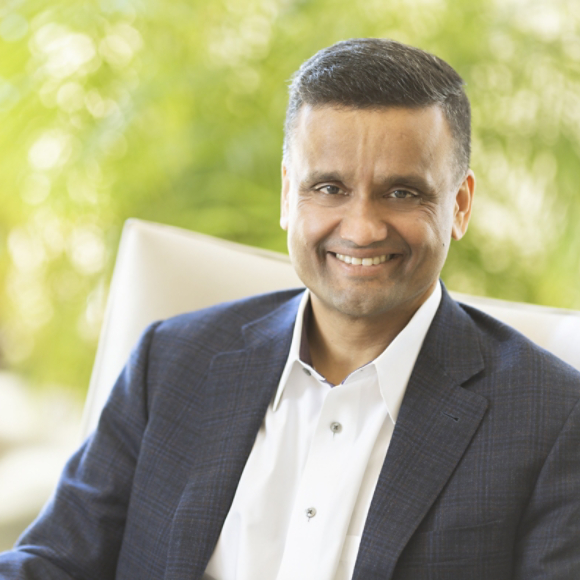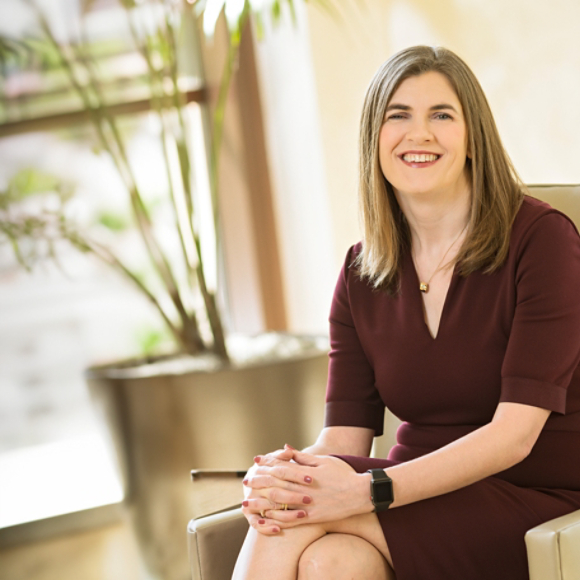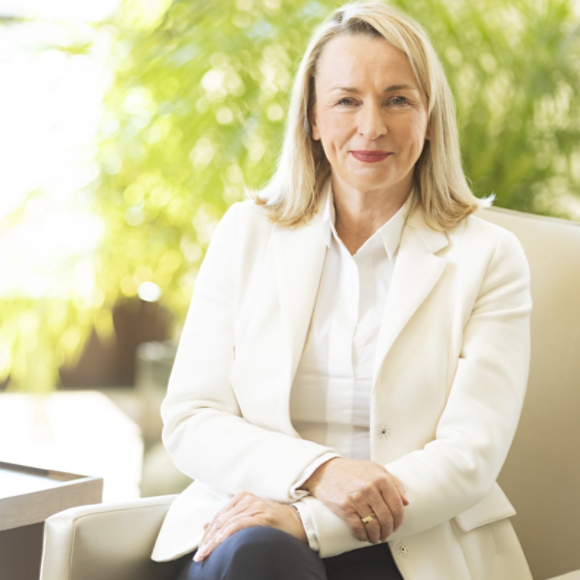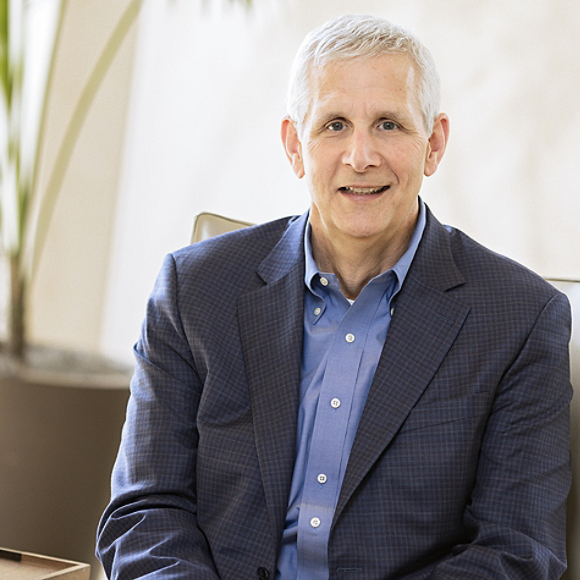June 24, 2025
Harnessing Heat – Thermal Management Systems
Season 5, Episode 1: The technology solution for cooler buildings
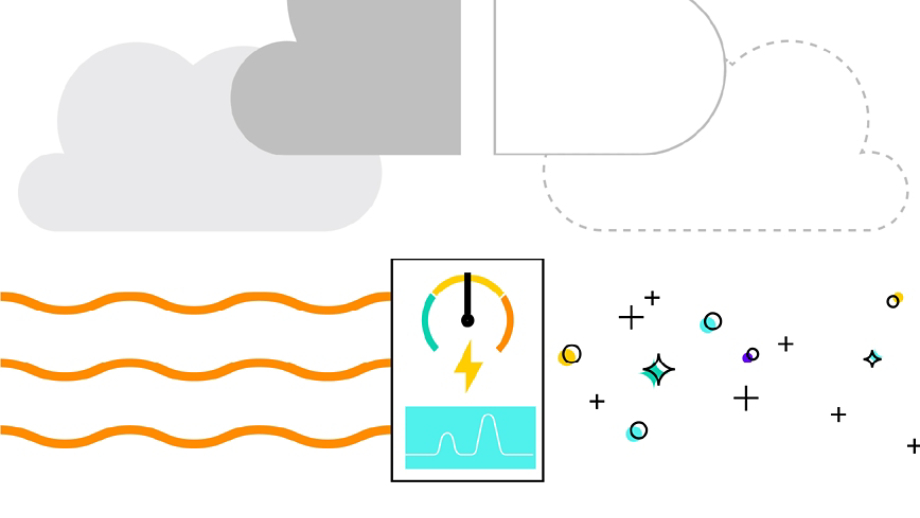
Buildings are responsible for more than a third of global energy consumption and emissions, with much of that energy use attributed to day-to-day heating and cooling needs. The challenge to meet ambitious sustainability targets means addressing the impact of the buildings. But, could they present the biggest opportunity of all?
Thermal management systems reduce energy
Thermal management systems for buildings focus on controlling the movement of heat to maintain a comfortable temperature for occupants and improve energy efficiency.
In this episode, we speak to Jose La Loggia, Group President EMEA at Trane Technologies, and Stan Van Hastenberg, Sustainability Lead at Organon, a global pharmaceutical company focused on women's health.
We discuss the ins-and-outs of thermal management systems, the complexities of energy transitions and how sustainable heating and cooling innovations can contribute to a net-zero future.
Watch or listen to the full episode to hear more about how electrification solutions like electric thermal storage and heat recovery can benefit business and the environment.
Watch Season 5 Episode 1: Harnessing Heat – Thermal Management Systems
- Things are changing in the world of sustainability. More and more companies are thinking about how sustainability can be embedded in their business plans and generate real value. But taking those first steps can be challenging.
- At the beginning, an energy transition is very complex. And in fact, you don't really know where to begin. But the most important thing is just beginning. Do something. Try something.
- According to the IEA, the International Energy Agency buildings are responsible for more than a third of global energy consumption and emissions, with a lot of that energy use attributed from day-to-day heating and cooling needs, and in a warming world, demand for cooling systems is increasing. We know that for a net zero future, the need for innovative solutions is real.
- You're listening to Healthy Spaces, the podcast where experts and disruptors explore how climate, technology and innovation are transforming the spaces where we live, work, learn, and play. I'm Dominique Silva, Marketing Leader at Trane Technologies.
- And I'm Scott Tew, Sustainability Leader here at Trane Technologies. And on Season Five of Healthy Spaces, we are bringing you a fresh batch of uplifting stories featuring inspiring people who are overcoming challenges to drive positive change across multiple industries. We'll explore how technology and AI can drive business growth and help the planet breathe a little bit easier.
- So, Scott, can you believe it? Here we are, Season Five.
- I know it's been quite a journey, Dominique, and I'm excited to kick off this season.
- Me too. And you know there's no better way than to start talking about thermal management systems. Now I have to admit it to you, Scott, I was a little bit confused at first. What is a thermal management system? It's kind of a peculiar term, right? And maybe some of our listeners haven't really heard about it either.
- Well, hopefully we're gonna make this sound simple by the end of this episode because we are talking about heating and cooling and it's something that all of us experience, but many times it's hidden behind the walls of the building that we're in, whether it's a home or the place that we work. So we don't think about this often, but in reality, what we're really talking about here is the opportunity for innovation that can be a catalyst for reducing emissions and for helping us stay comfortable. So, for organizations in general, there seems to be a lot of confusion around what thermal management systems are, how they work, and what the benefits are.
- And who better to explain that if not Jose La Loggia who today is the president of Trane technologies for Europe, Middle East and and Africa. He's gonna help us unravel some of these concepts, explain what thermal management is and the kind of change that companies like Trane Technologies are trying to drive in the business. And Jose has been in this industry and with the company for quite a long time. Any guesses, Scott, as to how long?
- No, no, I mean, Jose's one of these people that when you, when you see him, his appearances can be deceiving. You would think he, maybe he just came outta university, but I know maybe he's been around a long time too. So what's the answer?
- Well, Jose La Loggia has been with the company for 30 years, right? That's 30 years. That's a lot of experience in the industry. So, he's kind of been through a lot of the curves. And curiously, I was talking to him about his career path and he actually started as an equipment sales engineer. And then he spent a long time in services. And I think that's what sort of helps him to be able to connect the dots and explain it in such a clear, succinct way. So I'm really looking forward to this conversation and sharing that with you.
- Yeah, I think of Jose as a teacher. I mean, he's great at explaining these complicated systems, breaking it down for people so that they come away understanding how things work. And he's the perfect person
- For sure. So let's get right into it. Right? And as I mentioned before, Jose has come a really long way in terms of his career, not only in the company, but also geographically.
- Well, I worked in Australia when I started, and then when I left university I was, I'm a mechanical engineer. I went straight to La Crosse Wisconsin, which was, let's call it the head office of Trane at the time. And I was indoctrinated in the Trane way there, and I've stayed ever since.
- Wow. But from Australia to Wisconsin, you've really experienced the full thermal scale.
- I sure have. 'cause when I left Sydney in, back in 1994, I think it was a 35, 40 degree C day, and I got to La Crosse, Wisconsin, it was minus 30 degrees C.
- Have a feeling that throughout this conversation we're gonna be coming back to Wisconsin a lot. All right, so let's get down to the nitty gritty. I would love if you could start explaining to me how exactly would you define a thermal management system? Because this is a relatively new term in our industry. I think.
- Yeah, I think before we describe the thermal management system, we have to maybe acknowledge what is happening in most buildings or all buildings today. Whether they're are commercial buildings, factory buildings, hospitals, universities, whatever. There's always some requirement to cool these buildings, either for comfort applications or for process applications. And the processes can be quite varied. In a hospital, there could be processes around, you know, the machinery inside the hospital, like MRI scanners, that sort of thing. In a factory, if it's a milk factory, it's around chilling the milk, that sort of thing. So, what's happening a lot is that when people think of Trane, they think of Trane as a cooling company that's really in the business of providing this cooling. However, what's also happening all the time in buildings is that you have heating. And that heating, again can be for comfort situations like comfort heating, where you know it's cold outside and you need to heat the building so people are comfortable inside it. But it can also be for process heating. And again, process heating is quite varied in nature. If we go back to an example of a hospital, there's a lot of heating going on from a process point of view in the hospital for disinfecting, that sort of thing. And in factories that make chocolate for example, they need to heat and cool and, and so there's a lot of heating and cooling noise going on. So, basically the way that our industry, the heating and cooling industry, has evolved is that heating and cooling was seen as two separate silos. You know, you can try to increase the efficiency of your cooling system in isolation and, and we do that all the time. And you can try to increase the efficiency of your heating system in isolation. But if you look at these two silos in a tangential way, then you can really make a step function change in efficiency.
- I know you're a, a mechanical engineer like me, Jose, and what you're saying actually takes me back quite a few years now at this stage to one of my first classes of thermodynamics. And this whole notion that you cannot create energy, right? And heat is nothing but a form of energy. You can't really destroy energy either. You can only transform it from one form to the other. And so that's a little bit what I'm hearing here, right? If you have heating and cooling demands in a building, how can you actually balance that in a way versus trying to effectively have separated cooling and and heating systems? So ,I understand now what a thermal management system is. Can you maybe now help our audience sort of connect that to types of technologies? So, you've mentioned a few times, you know, Trane is known for the cooling. Most of our listeners will know what a chiller is. They might even know what a heat pump is. What other technologies are out there that are part of this thermal management system?
- Yeah, so that's a great question because I think today it's quite topical to talk about heat pumps and everyone is talking about heat pumps and how heat pumps are going to replace fossil fuel heating systems. So, a thermal management system is not a heat pump, right? A heat pump can be part of a thermal management system, but it's not the whole thing. So, if we think about a thermal management system will be some sort of machine that can make cold water, which we call chillers. There could be some heat pumps and a heat pump is something that can either make hot water or cold water and the appropriate word is the or it cannot do both at the same time. And then you have what we call a four pipe machine, which is a machine that can create hot and cold water. So, and being the appropriate word there, at the same time. Then we have obviously the controls that can control combinations of these types of machines, chillers, heat pumps, and four pipe machines in a system environment. And when you combine, depending on the type of building you have, where it's located, the type of use the building has, we combine chillers, heat pumps, and four pipe machines with our controls to satisfy the heating and cooling demand in any building, in any climate.
- Interesting. So again, coming back to this concept of linking or balancing heating and cooling in a building or a factory, it seems like a really simple and elegant idea. How is this also a big opportunity for energy and cost savings? I mean, why change to a thermal management system?
- Yeah, maybe to really answer that question we have to, and I know you'll like this because you were doing these sorts of things in, in a previous job. You know, I think at the time we, you were working on a project where you are looking for absurdities and we would cancel those absurdities and they would be big opportunities for the company, but also big opportunities to make changes in terms of things that affect the climate. So, the absurdity that exists in the majority of buildings today is that you have, by definition, when you're cooling something, you're not destroying that heat, you're moving it somewhere else. So, if a building needs to be cooled, you need to move the heat outside. So you're rejecting the heat usually to the atmosphere.
- Right?
- Now at the same time, that building may require some heating, it may have a heating load in parts of the building, even in the full summer for example, you may need to heat hot water for showers or as I mentioned in the hospital to take care of sanitary water, that sort of thing. So, the only way to create heat then in this kind of environment when your heating system and cooling system is decoupled, is to run a boiler and burn fossil fuels to do that. And that's really the absurdity, right? You have one machine that is throwing heat away and then you have another machine which is burning a fossil fuel to create the heat. So, when you think about that absurdity, it's a great opportunity for all our customers to really, you know, save a lot of money because if they can have a thermal system, they can eliminate this wasted heat, this heat that would be rejected outside that, then they would have to recreate it with some sort of fossil fuel based boiler. And a boiler uses gas or oil and that gas or oil costs money and that's where the savings comes from.
- Oh, interesting. So we often talk about recovering or recycling, but the way I'm hearing you say it, it's almost like we're upcycling heat and taking that low grade energy that would otherwise be wasted. 'cause that's, you know, what we all used to do and what is deemed conventional and actually recovering it and creating value for customers, either through comfort heating as you mentioned, or hot water for processes. Now it sounds a little bit too good to be true, it just to be very, I'm also very pragmatic. So what are some of the barriers that might exist to implementing this kind of technology?
- Yeah, that's a great question as well, Dominique. So the biggest barrier that exists today, it's not a financial barrier or a technological barrier. The biggest barrier that exists today to the adoption of, let's say, a more wider adoption of this technology is really knowledge and tradition. So, a lot of people, they just don't know that the majority of buildings are heating and cooling simultaneously, and they're doing it with separate systems where one is rejecting heat while the other one is creating heat. So, that knowledge is very important that we continue to make sure that people understand that. And I think that one is probably the easier nut to crack. The harder nut to crack is that when we talk about commercial buildings and factories, these are complex things. They need to be either redesigned or constructed. And there's always a building owner and there's always what we call a a mechanical contractor or contractor who's gonna do the construction. But then there's a designer or design engineer who has to design the heating and cooling system. So when you have a whole generation of engineers who grew up saying that I design a building in a certain way, you have to change their behaviors and to change, you know, engineering. As you know, you're an engineer too, as you just said before, people don't like to take big risks, right? Because
- Right
- If you are gonna design something, you're probably going to use a design that you know that works and has worked for you in the past. And if someone comes and asks you to do something completely different, you're going to, you know, be a little bit hesitant and thinking, okay, what if it doesn't work?
- You don't wanna be the person who signs that paper and that project, right? So you're gonna trust what's known.
- So that's where it's very important. So for me, this breaking of these traditions and educating and bringing confidence to the designer community that this is a really reliable technology can help really accelerate this transition. It's very similar. Like if I use a completely different example, you know, I think we've all heard of range anxiety for electric cars. I know that you drive an electric car, right?
- I suffer from that, yeah.
- You suffer from that. But again, I think that is the form of, you know, how often have you really run out of battery on your car, right? It's just the form of, I'm used to always driving with a car that, you know, I can stop and fuel it here I have a different energy source which I can also stop and fuel, but somehow we've sort of got a little bit of anxiety because it's new, right? And, and, and those things, they're hard to quantify, but they certainly have an impact on how we behave and behaviors lead to outcomes.
- When and where do you think companies should start thinking about their thermal management systems? Should they wait until a new legislation comes in? I mean, what, when's the right time to start this?
- That's a very good point as well to to make here. So I think if you're a company who's buying in the market to buy a new cooling system, I think that's the best time to start thinking about a thermal management system. Because replacing a chiller plants is quite a big investment and it's an investment that you have to do when it needs to be replaced, right? And so at that point, for sure, it's better to say, okay, instead replacing this chiller plant with another chiller plant, I'm gonna replace it with a thermal plant, a thermal management system plant, which will also provide heating for me. And then it becomes a question of, okay, what is the incremental additional cost of this thermal management system relative to a straight out chiller replacement? And the majority of times, you know, our customers see that that incremental cost of that thermal management system pays back very quickly, usually less than three years.
- It's good to hear your optimism that the opportunity is here now, right? Not just for us as a company, but for our customers to be able to decarbonize and reduce their energy spend as well. Thank you so much for joining us on the Healthy Spaces Podcast. Jose, any parting thoughts from your side?
- Yeah, of course. I'd be remiss if I didn't mention that for those of you who may not have heard it already, that a thermal management system is up to 400% more efficient than a separated chiller plant boiler plant. So when you have a technology that is 400% better than the old technology, there is no reason not to change. And it really links with this whole concept of green for green. And it's a huge opportunity not only for our company, but for the whole industry to change in this direction.
- We often hear that change in industry is driven by legislation, but Jose brings a refreshing take that we don't have to wait for new laws, we don't have to wait for someone to tell us that we have to be carbon neutral because there's really already a good business case there and someone who knows all about this is our next guest, Stan Van Hastenberg. He's the Sustainability Lead at Organon, a global pharmaceutical company with a primary focus on women's health. And Stan is responsible for Oss, which is their plant in the Netherlands, their biggest manufacturing facility actually globally. So Stan has been in the pharmaceuticals industry for 20 years and he actually started at Organon as an Operations Director. And it was only when he transitioned to a Sustainability Lead position that he found his true calling. And he's gonna talk to us about a little bit of that as well. Stan implemented an ambitious project and this was game changing for the manufacturing plant of Oss. And it all started with some good old detective work.
- In the beginning we firstly mainly looked on energy saving possibilities. We also more looked into the energy transition. And when you look into the energy transition and you think about the long journey, you have to realize this energy transition. We found out that it's also very interesting to look at the terminal energy system, in fact.
- Coming from more of a operational background and then having to expand that into sustainability. What was, for you personally, a "aha moment" in which you realized this really matters, right? What, what motivated you?
- Someone explained me the planetary boundaries model. This model describes the current situation of the earth from a sustainability perspective. And if you look into this model, you see that the situation is quite urgent. We have to act. So that model really did we realize that we have to come into action, we have to do something to really work on the on, on the transition effect of, or more transitions to create a new way of working. And in that way, yeah, preserve the planet earth for future generations.
- That's really inspiring, Stan. Thank you for sharing with us. And I always think it's very interesting to tap into the "aha moment" for each of us. So you're now into this role as a sustainability leader. You have a personal belief that this is the right thing to do for the planet and for the company. You've done your assessment, you've identified some great opportunities for energy savings. You've come to the conclusion that the heating system, right, your heating and cooling system is ripe with opportunity. Now you've gotta get funding, right? For this, for the project.
- Yeah, of course.
- 'cause our own self-belief isn't enough. So talk to us a little bit about, you know, those first meetings. How did those conversations go? Was it easy peasy?
- Of course not easy peasy because always we have to make a a business case. So for each project we start, we will make a business case. We have a standard format for that and we have to get an estimation of the investment and also of the benefit, eh, and the nice thing is that when you work on this kind of projects, you work on sustainability, but you also work on cost saving because for instance, replacing an heating system, which is fueled by natural gas, replacing it by a heat pump mostly always leads to also a more energy efficient system. So in that way you work on sustainability but also in cost saving. The big thing here is where when we start these projects, we, in most cases, we can convince the senior management also by the fact that we are working on cost saving projects.
- Now, fortunately or unfortunately, senior management and people in charge of books are not the only ones who need convincing for an undertaking of a project like this. Right. So it sounds like, you know, indeed when it was about obtaining funding, you're able to make the case of there's a financial benefit to doing this as well as an environmental benefit. It's aligned with our values as a company, but there were other stakeholders you probably need to get buy-in from. 'cause this was very intrusive, right? What you were aiming to do. And we'll get into a bit on what that solution was. I just wanna kind of get through the, the people that you had to work with alongside. Was there anyone who was a bit more skeptical and resistent to change.
- Of course, of course.
- You don't need to name them Stan, but tell us a little bit about that.
- I'm not naming them because that's not so nice thing, but of course you have to convince the fact everyone, eh, but giving some background, eh, really explaining the why of these projects helps in convincing people. So as a team we do a lot about in fact communication. And I think that communication and creating awareness is even more important than the technology itself. So we really work on, for instance, giving presentations, writing articles, all kind of ways in involving as much people as is possible to work on these important topics. And when you really understand, eh, the urgency and the concept, most of them are willing to work with us and realizing these goals.
- So I'm hearing, you know, communication, communication, communication, start with why and the why might be different, right? Whether you're talking to a CFO or whether you're talking to your quality manager, that why might be different. So definitely don't underestimate.
- Yeah, another example is talking with operators, the operators of course have another perspective, but if they
- Great point
- For instance, turn off the lights when they leave the production room, it all helps. And so you always have to translate it to their situation. So what, what they can do to help us. And if you talk with these operators, they will understand why they have to switch off the light. If you just say switch off the light, they will not understand that. They will say, yeah, another rule in a pharmaceutical company. So if you tell them you have to switch off the light because, hey, you are saving the planet, making it somewhat bigger, in fact, then it really helps.
- Alright, well Stan, I think we've been creating a lot of suspense around what this actual thermal management system was, right? This big undertaking, this massive project that you had to get so much stakeholder buy-in is so in as simple as you can, can you explain to us exactly, yeah,
- Yeah.
- What was this project all about and what made it so unique and innovative?
- Okay, so we have a rather big production building with a lot of different production departments. And in this building we have a central heating system, which at the moment is heated by gas fired boilers in fact. And we want to switch over step by step to an energy system, which is based on renewable energy. One step we could do with this project is we also make use of compressed air in our production building. And this, by generating this compressed air, you have to cool, so you have to cool the compressed air installation for the cooling. We introduced two heat pumps. So these heat pumps are more energy efficient than the other way we did it. And also by cooling you generate excessive heat and we feed this excessive heat back into your central heating system and that way we save energy. So while we have a more efficient way of cooling. And the the big bonus is that we also can feed in the excessive heat back into the system. And in that way we are saving energy and we are taking a step in losing some fossil fuels and introducing some renewable energy because a heat pump, of course is working on electricity.
- And so what was happening to this waste heat before, right? Because you were already using cooling for..
- It was blown into the air effectively.
- Wow. All right. So it, it was almost like throwing money away if you would put it that way.
- It's, it's, yeah, you could put it as throwing money away effect. Yeah. So thinking in that way really opens other opportunities to save energy. Yeah. So excessive heat or also excessive cooling, think about how to reuse it again, that really helps us as a company and I think it also will help a lot of companies to think in that way.
- Yeah, of course. And I think what I'm hearing Stan is that imperatively, it's really important that people like you are not just looking at how do I make the cooling process more efficient but really looking at cooling and heating together. So how do I recapture and repurpose and reuse energy so that I don't have to generate new energy, which is what in the past you were doing, right? By using boilers, burning fossil fuels to generate heat. And so you've talked about your compressed air, so this is more the process side of, of your factory, but you also have quite big offices, right, right next to your manufacturing plant. So how, what's the, the story there?
- Yeah, also there we are at the moment installing another heat pump which will be used for heating and also for cooling of our offices buildings. So there we are, we do that together with an aquifer terminal energy storage system, which is in fact energy storage in the soil and then using the heat pump to get the right temperatures in the winter periods into the building and cool in the summer periods. So we are at different points at our manufacturing and also our office buildings. We are looking into ways to introduce heat pumps.
- Interesting. Now saving energy, reducing energy consumption is not just a technology game. And we talked about change management before Stan. You talked about operators. I mean, can you think of like some of the most skeptical things you heard or barriers that might have led? Did you at any point even believe that this was not gonna be possible? Did you ever think about giving up?
- No, because I'm really motivated by the planetary boundaries and, and that insight that we have to take action. And then you can always ask the why question. Why is this regulation in place? Why is this needed? But in convincing people, it's really important to understand their point of view. So I really try to listen and try to listen to their concerns. And then if you really understand their concerns, that's almost always a way, a way to overcome these concerns and to find a solution which works for different parties. But that was a struggle in the beginning, in fact. And sometimes you just have to start a project and just try it and sometimes it works and sometimes it fails. But doing nothing is not an option. So at the beginning, eh, an energy transition is very complex and in fact you don't really know where to begin. But the most important thing is just beginning do something, try something.
- I love that.
- Within the right boundaries, of course, don't try to do anything but in the right boundaries just start and and do a first project, buy a first heat pump or something.
- I love that. Start somewhere.
- Waiting is not an option. The earth's warming up so we have to take action.
- Gosh Stan, you're even convincing me and I already have heat pumps in my home.
- I hope to convince you all okay that's my mission, in fact.
- Oh, and that's why we love having you here. And so one of the reasons why we are here talking together, Stan, is because you know, you were able to turn this into a success and and implement your big project. But I liked something you said earlier around, hey you, you had to start somewhere, start relatively small, prove the benefit, and then after that the expansion of the project sort of just became easier because people believed. Do you remember any specific situation being it a day or a meeting in which you were finally able to come to the table to say, Hey, this is working. Can you remember that moment?
- I can remember some moments. Okay, we started some projects, eh, for instance, also relatively easy project. For instance, turning off the HVAC system of offices, buildings after office times. It's just a very simple change factor. But you have to look to find these changes and then realize them. And then when you do this change, you will also can calculate the financial benefit. And by these first small victories, the confidence of the team is growing, the confidence of the management is growing because you can actually show the results. And just by starting the smaller projects, you start to think about some bigger projects. And in that way you really broadening the project, broadening the program and creating awareness and creating a success. And then that way it's...
- And you're driving some change and
- You're driving change. Yeah, you make people enthusiastic and yeah, that really worked for us.
- Alright, so what's next for Organon in terms of sustainability initiatives? Because you strike me as someone who's not gonna stop here.
- No, no, no, we, no, no. So next is introducing some heat pump. So that's for the coming year. But we also are looking into the longer term. Our ambition is to become climate neutral in 2035. So we have to do a lot, coming there. So we have a number of different programs. I would say for instance, that we want to go from high temperature warming of our buildings to low temperature warming. We want to introduce heat pumps. We are looking at an energy storage network. So we are looking at a number of different things. We are also really getting into working together with the other companies at our site. So find out if we for instance, could realize a central heating network because some of the companies will have excessive heat and other companies will need some heat. So try to work together there. So we are really are looking very broad to find different opportunities to realize a final goal.
- So that's it our first episode, Scott. And you know, one thing that I really love that Stan sort of kept bringing up was how he continuously involved people in the process, right? You can have all of the technology and the business case can be there, but if people don't adopt, if people don't believe it's gonna be really, really hard to make that change. And I like how he kept going the extra mile to bring his stakeholders in.
- Yeah, you're right Dominique. I mean he made great points about including lots of stakeholders and people, but he also made another point that I don't want our listeners to miss. And that was just the importance of small steps.
- That's true.
- You know, many people, many of our listeners probably are with companies that have lots of sites, lots of old equipment. It's overwhelming. And one of the things that I've learned and like Stan explained really well is this incremental steps, small steps made over a long period of time can really change things for the better. So rethinking thermal management is something that's absolutely attainable for any organization, no matter how big and small.
- I love it. And linking back to what Jose said right at the beginning of the episode, he gave us some really good tips as well of what are the questions you should be asking yourself and how do you start right when it seems overwhelming and the benefits are there, right? This is technology that's good for the planet and it's good for the bottom line.
- That's right. And we'd love to hear from our listeners. Stan is not the only one that has a story to tell. Our listeners also have stories too. So we would love to know if your organization has been looking for a technology to reduce emissions or maybe you've already found a solution that works, we want to hear from you. So please drop us a comment.
- Can't wait to read those. And that's it for this time. This has been the Healthy Spaces podcast with me, Dominique Silva and my lovely co-host Scott Tew. And if you want to learn more about the topics we covered today, you'll find all the links in the show notes and we'll be back in two weeks with another episode. So be sure to like and subscribe so that you don't miss out. Thank you for joining and we'll see you next time.
Featured in this Episode:
Hosts:
-

Marketing Leader EMEA, Trane Technologies
-
Global Head and VP, Sustainability Strategy, Trane Technologies
Guests:
-
Jose La Loggia, Group President, EMEA
-
Sustainability Lead, Organon
About Healthy Spaces
Healthy Spaces is a podcast by Trane Technologies where experts and disruptors explore how climate technology and innovation are transforming the spaces where we live, work, learn and play.
This season, hosts Dominique Silva and Scott Tew bring a fresh batch of uplifting stories, featuring inspiring people who are overcoming challenges to drive positive change across multiple industries. We’ll discover how technology and AI can drive business growth, and help the planet breathe a little bit easier.
Listen and subscribe to Healthy Spaces on your favorite podcast platforms.
How are you making an impact? What sustainable innovation do you think will change the world?
Topic Tags

 English
English







